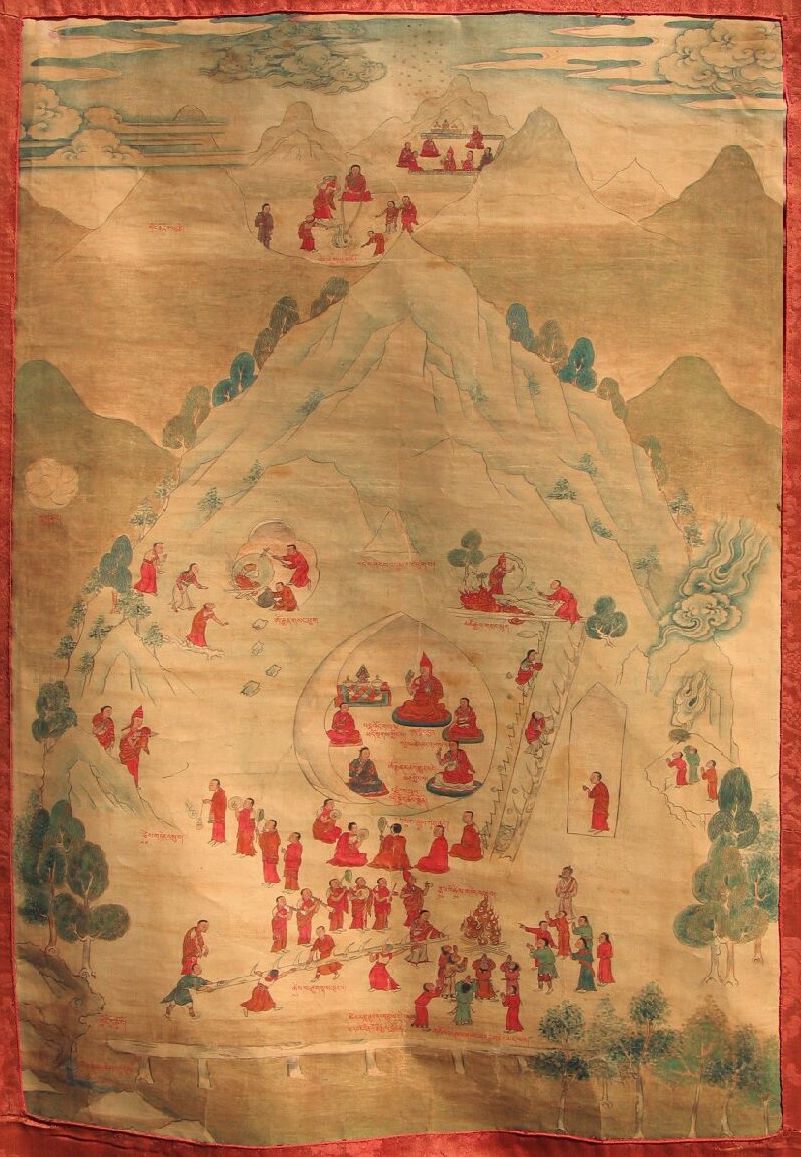Buddhist practice and Buddhist art have been inseparable in the Himalayas ever since Buddhism arrived to the region in the eighth century. But for the casual observer it can be difficult to make sense of the complex iconography. Not to worry—Himalayan art scholar Jeff Watt is here to help. In this “Himalayan Buddhist Art 101” series, Jeff is making sense of this rich artistic tradition by presenting weekly images from the Himalayan Art Resources archives and explaining their roles in the Buddhist tradition.
Himalayan Buddhist Art 101: Life Event Paintings
 Visual depictions of the life stories of well-known religious figures, such as Shakyamuni Buddha, Milarepa, and Tsongkapa, are commonplace in Himalayan Buddhist art. Slightly less common but still popular are the records of singular life events that transpire over the course of a few days to a month. Narrative events of this type are most often rendered as individual compositions rather than multiple-painting sets.
Visual depictions of the life stories of well-known religious figures, such as Shakyamuni Buddha, Milarepa, and Tsongkapa, are commonplace in Himalayan Buddhist art. Slightly less common but still popular are the records of singular life events that transpire over the course of a few days to a month. Narrative events of this type are most often rendered as individual compositions rather than multiple-painting sets.
The painting shown here depicts an event which took place in 1867, during the Tibetan 9th and 10th months of the year. It tells a story of the uncovering of Nyingma treasures (“terma“) in the mountains above Dzongsar Monastery in eastern Tibet. The two main characters in the unfolding religious narrative are Jamyang Khyentse Wangpo (1820–1892) and Choggyur Lingpa (1829–1870). Khyentse Wangpo can be identified by the red hat that tapers to a tall point and Choggyur Lingpa by his green shirt, long black hair, and white lower garment. The best example of the two main figures is found in the detail image of a teardrop circle, slightly below the center of the composition, where they are seated and performing a ritual ceremony.
by the red hat that tapers to a tall point and Choggyur Lingpa by his green shirt, long black hair, and white lower garment. The best example of the two main figures is found in the detail image of a teardrop circle, slightly below the center of the composition, where they are seated and performing a ritual ceremony.
The composition follows a continuous narrative style with the two principal characters repeated as many as six times across the story’s timeline. The full duration of the event lasts approximately a month. However, only the most important events in the narrative are  depicted in the encircling vignettes. Each of these key events is accompanied by a brief Tibetan inscription along with a numeric character dating the event. The short and cryptic inscriptions are supplemented by full narrations of the events written on the back of the painting.
depicted in the encircling vignettes. Each of these key events is accompanied by a brief Tibetan inscription along with a numeric character dating the event. The short and cryptic inscriptions are supplemented by full narrations of the events written on the back of the painting.
Life event stories and full life stories are two different forms of biographical writing depicted in Himalayan-style art. It is almost always from life event writings that the mahasiddhas and later Buddhist teachers take on particular iconographic appearances along with identifiable symbolic attributes, postures and gestures in artistic depictions.
Thank you for subscribing to Tricycle! As a nonprofit, we depend on readers like you to keep Buddhist teachings and practices widely available.